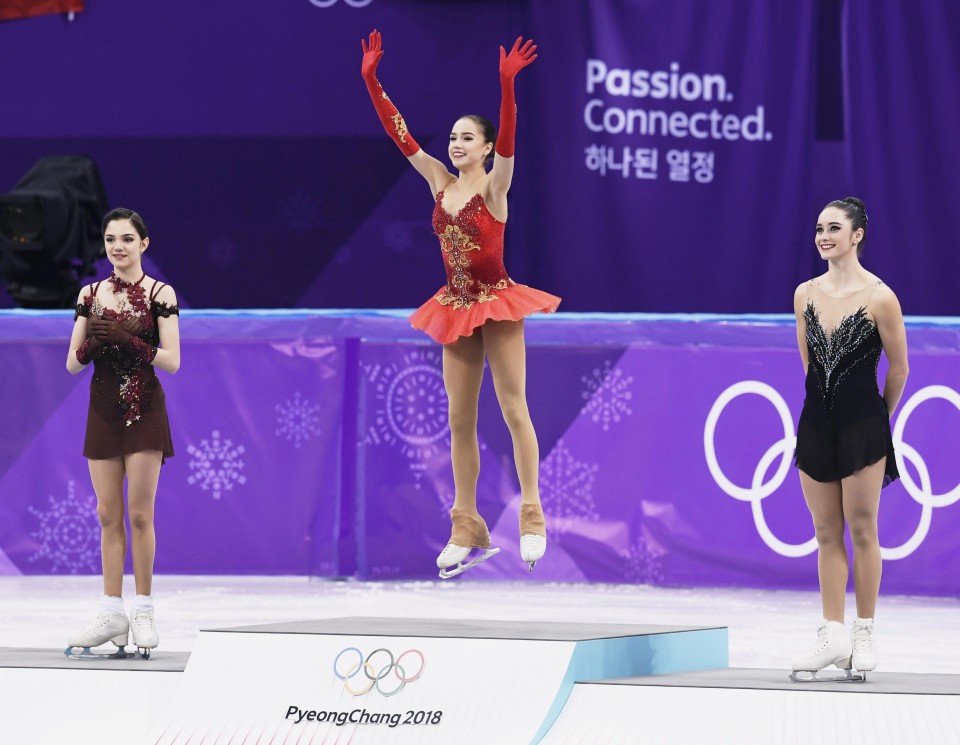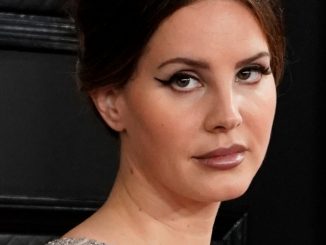
[dropcap]T[/dropcap]onya Harding is best remembered as the first American woman to successfully do a triple axle at competition, but also as the outcast of figure skating in the nineties. Tonya’s poor background was reflected in her costumes which were hand made by her mother and later by herself when they became estranged. Her costumes didn’t look like the other skater’s with many judges branding them tasteless or tacky. Tonya believes that contributed to her outcast status and unfair markings at competitions.
Her infamous costumes have been recreated by Jennifer Johnson in the Oscar nominated film I,Tonya. Johnson recently won a Costume Designers Guild Award for Excellence in Costume Design for a Contemporary Film, for her work on I, Tonya. When Johnson met the real Tonya, she said Harding couldn’t believe how accurate she got the outfits, down to the last detail.
“My God! When I was watching the movie I thought, how did they get a hold of my skating costumes and my clothes?” Harding said in an interview with Vogue.
Many things have changed since Harding got her lifetime ban from figure skating, from the scoring system to the style, all evolving in the last 20 years. The ladies figure skating finals in Pyeongchang this year saw a battle in technical ability but also for the best costume.
Many of the outfits worn were integral to the routine and music of most skaters. Mirai Nagasu, from the US, skated to music from Miss Saigon. Her red dress was inspired by the orient, like a costume from the stage musical. Nagasu made history at the Pyeongchang Winter Olympic Games, becoming the first U.S. female figure skater, and third woman ever, to nail a triple axle during an Olympic competition. Because of that, this bold red ensemble seems destined to become one of the sport’s most iconic.
Another one to remember from the games was France’s Maé-Bérénice Méité, who wore a unitard to perform her short program (in both the team and women’s single events) to a medley of Beyoncé songs. Méité also made a statement in a pair of bedazzled hot pants during her free skate. It is unusual for skaters to opt for pants while skating, but it’s not uncommon. This year Méité wasn’t alone as Ivett Tóth from Hungary wore a pair of full length leather pants during her free skate. The biker inspired look went down well to an AC/DC classics mash-up.
Russian athletes Alina Zagitova and Evgenia Medvedeva took home gold and silver respectively, and Canada’s Kaetlyn Osmond earned the bronze. As well as giving the performance of their careers, the women also did not disappoint with their costumes.
Gold medal winner Zagitova wore a ballet inspired tutu in both her free skate and short program. Her short program dress was inspired by The Black Swan and was the pinnacle performance for the fifteen year old as it was here that she earned the one point that allowed her to beat her fellow Russian.
While Medvedeva was favourite to win before the games, the silver medalist will be remembered for her Anna Karenina inspired dress long after Pyeongchang. She was out-skated by Zagitova but not out dressed. The color and embellishments on her dress and the gloves she wore all added to the performances, complimenting the music nicely.
An honourable mention is the bronze medalist, Kaetlyn Osmond. The Canadian performed to music by Edith Piaf in her short program and conveyed a Parisian aesthetic, through her navy dress with a matching neck scarf.
Team Attire
Most countries have designer kits for the opening and closing ceremonies. In the past Great Britain have had Stella McCartney and Vivienne Westwood design their gear for previous Olympic Games, but his year Team USA stood out with theirs created by the Ralph Lauren brand.
For the sixth time, label is an official outfitter of the U.S. team, and its latest uniform includes a jacket, sweater and pants with an all-American style. The whole look is topped off by brown suede mountaineering boots and fringed suede gloves.
Individual gear differs depending on the sport but the 2018 U.S. Snowboarding Team could have doubled as extras in a retro sci-fi movie. Burton designed the official uniform for the athletes, taking inspiration from vintage NASA space suits, that are white with red infused. The jacket lining also features Korean translations of phrases like “Do you speak English?” and “Wish me luck.”
For the American skiers, The North Face is back for the second time as the uniform supplier for the U.S. Freeski Team. To design the look, the brand worked with its athlete partners, including Olympic gold medalist Maddie Bowman. The kit includes outerwear, base layers, accessories and footwear.
A dishonourable mention for Team USA comes from designer Under Armour. The brand designed the speed skating uniforms worn by the men’s and women’s teams at Pyeongchang last month. The skin tight bodysuits had an unfortunate design around the crotch area that drew the eye directly to the groin area.
In a statement, Under Armour defended its design, saying the crotch region required material of a different fabric, termed “ArmourGlide”, to reduce friction.
“The contrasting material in the inner thigh (friction guards) has been commonplace for speed skate skins for decades, to reduce friction,” they said.
Getting In Gear
Lizzy Yarnold from Great Britain successfully defended her gold medal with a blisteringly fast final run in the skeleton. Team GB’s skinsuits have been credited with giving British competitors the edge over competition in the 2018 Winter Olympics.
Rob Lewis, managing director at TotalSim, a company that has helped develop aerodynamic suits for the British Cycling team says that athletes can find easier gains by improving their aerodynamics of their equipment.
“With a lot of sports you quickly find that being a good sled driver or being a good bike rider is fine – but being ten per cent better at that doesn’t make you much faster.”
When designing aerodynamic suits, the athlete is scanned in 3D while they’re in position on the sled. This scan, which can be down to a resolution of half a millimeter or less, is then used to create a 3D model of the athlete’s body to be used for virtual wind tunnel experiments.
Starting with a smooth, skin tight suit helps air cling closely to the body, reducing friction. “You need to make them bloody tight, make sure there are no wrinkles, nothing bunched up,” Lewis said.
A carefully placed seam can encourage more air to cling to the athlete, while rougher patches of material break up the airflow and help the athlete turn corners more easily.
And all of these adjustments must be made within the confines of the sport’s rules. When it comes to skeleton, the rule book leaves a fair bit of room for engineers to get creative with skinsuit designs. Adding aerodynamic elements under or on top of the suit is prohibited, as are coated textiles, but they don’t get more specific than that.
While the science and look of sports gear is essential for many athletes, for figure skater it’s still down to personal preference. For Tonya Harding her costumes reflected who she was as a person, something the judges didn’t always like but something that Jennifer Johnson admired.
“With Tonya, because she’s a tough person, she’s not afraid to voice her opinion and she does not particularly consider herself ultra-feminine, so the skating costumes were always pink and purple, and colours that were probably quite uncomfortable for her in real life’’.
‘’I love that Tonya really always said, ‘No. This is who I am, and please listen.’ I just thought that was really fascinating. That, to me, makes her really a powerful figure in the sports world, because that world is sort of a ballet. It has so many rules, and it’s sort of like cotillion, the rules of dress and behaviour and how women should act,” Johnson said in an interview with Deadline.
Despite her costume being handmade, Harding will always be remembered in sporting history in her blue dress when she pulled off the triple axle.
Adam Daly
Image Credit: Kyodo News



